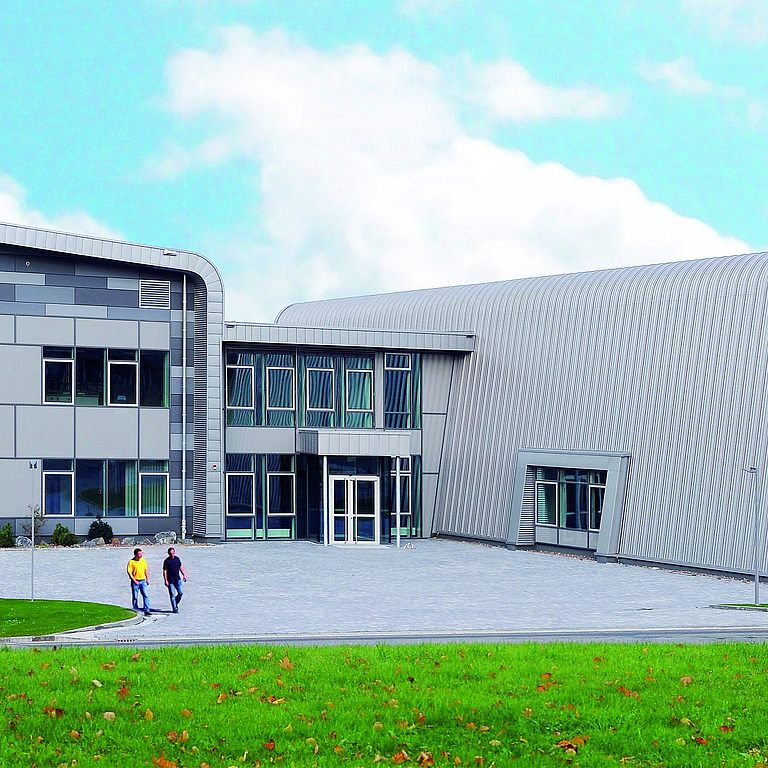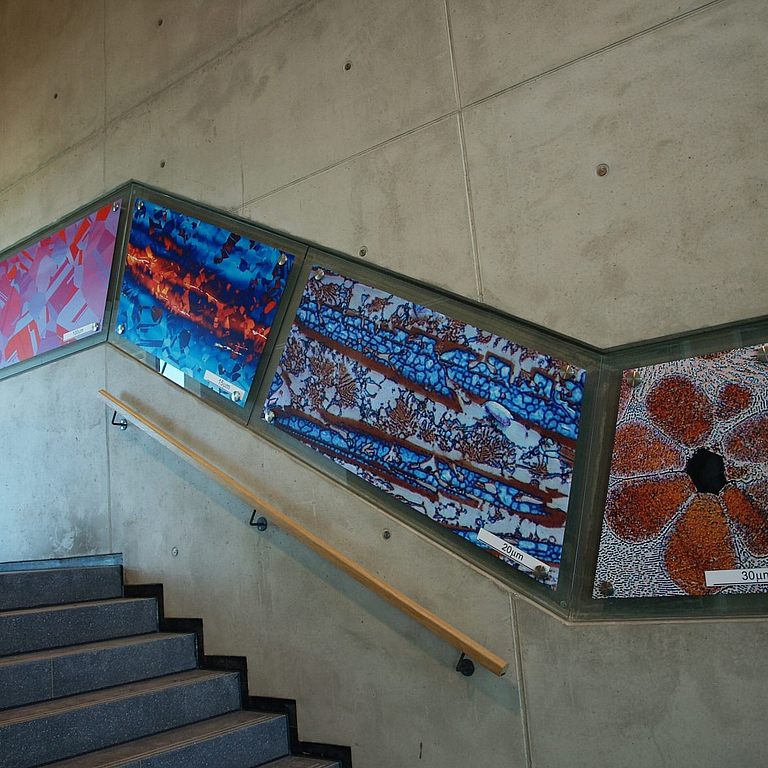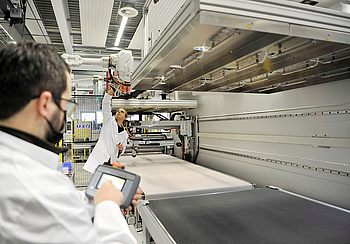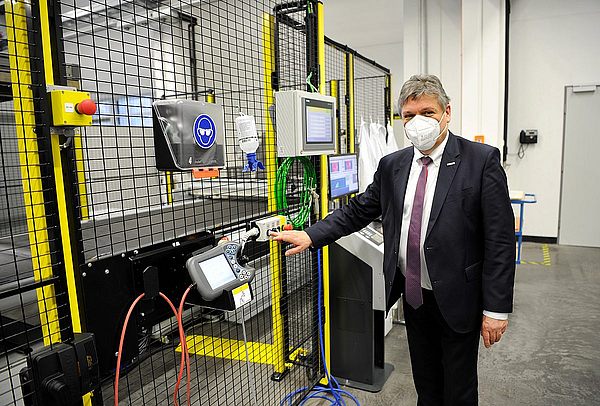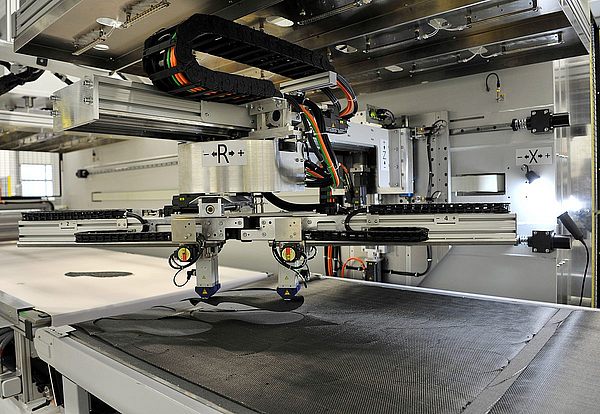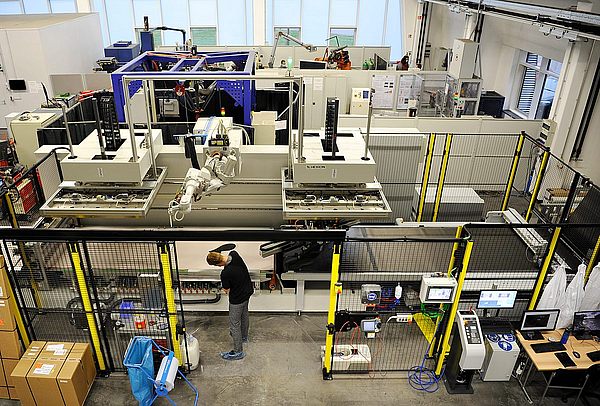Fiber composites are used in high-performance components for aerospace, mechanical engineering, the automotive industry and in the sports sector. They impress with their excellent mechanical and physical properties. In the area of these materials, so-called prepregs are particularly in demand due to their simple and good processing possibilities. A prepreg - the term comes from the English word pre-impregnated - is a fiber fabric impregnated with resin. It exhibits high reproducible properties in the semi-finished product and transfers this property profile to the components made from it. However, there are also some material-related disadvantages. Researchers at the Clausthal Center for Materials Technology (CZM) want to eliminate these problems in the future through extensive research work on a new large-scale device.
The equipment has been developed at Clausthal University of Technology and financed to the tune of around 1.2 million euros by the German Research Foundation (DFG), the Lower Saxony Ministry of Science and the university. The machine sets a new, innovative and future-oriented standard in prepreg technology. "Improved utilization of raw materials, avoiding contaminated waste and reducing energy consumption are just as much the focus as developing highly complex components, shortening process times and improving the mechanical properties of the end products," explains Professor Gerhard Ziegmann of the Institute of Polymer Materials and Plastics Technology.
The problem with prepregs up to now has been that for complex geometries, component sections have to be cut out of a continuously produced semi-finished product, which involves large amounts of waste of up to 40 percent. This waste cannot be recycled or can only be recycled at extremely high cost. As a result, they drastically worsen the CO2 balance of fiber composite applications. Furthermore, the semi-finished products have to be stored at a temperature of minus 18°C, which has an additional negative impact on the energy balance.
The Clausthal plant now reverses the principle of prepreg production - first cutting, then impregnation and curing - and thus solves the problems described. The operation of the online plant can be divided into several stations: First, the stored, dry semi-finished product is cut to the desired component shape fully automatically. The residual material can be reused or recycled without any problems, as it does not come into contact with the reactive resin. If necessary, for example in the case of natural or aramid fibers, the textile structure can be dried in the next step directly before impregnation to exclude the effects of moisture. The textile or later component is then impregnated precisely with a freshly mixed resin-hardener mixture. In the course of the innovative application method, resin waste is largely avoided and contamination of the residual material is prevented. In the final station, the controlled start of the chemical curing reaction (B-staging) takes place to shorten downstream production steps, such as the final molding and final chemical reaction in a heated pressing station.
"The process realized with the online prepreg system represents a milestone for resource-saving production of high-performance components in a wide range of applications," say Professor Ziegmann and doctoral student Grigori Oehl. Future collaborations with partners:in industry and research will ensure optimization and timely transfer for large-scale applications.
Video-Server: Innovative fiber composite process for lightweight construction concepts
Contact:
TU Clausthal
Press spokesman
Christian Ernst
Phone: +49 5323 72-3904
E-mail: christian.ernst@tu-clausthal.de
